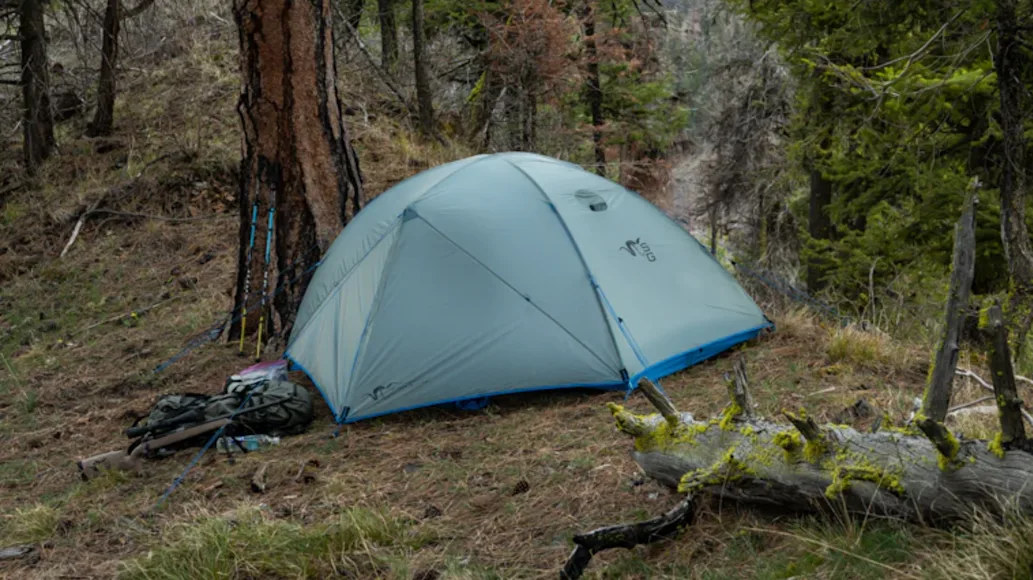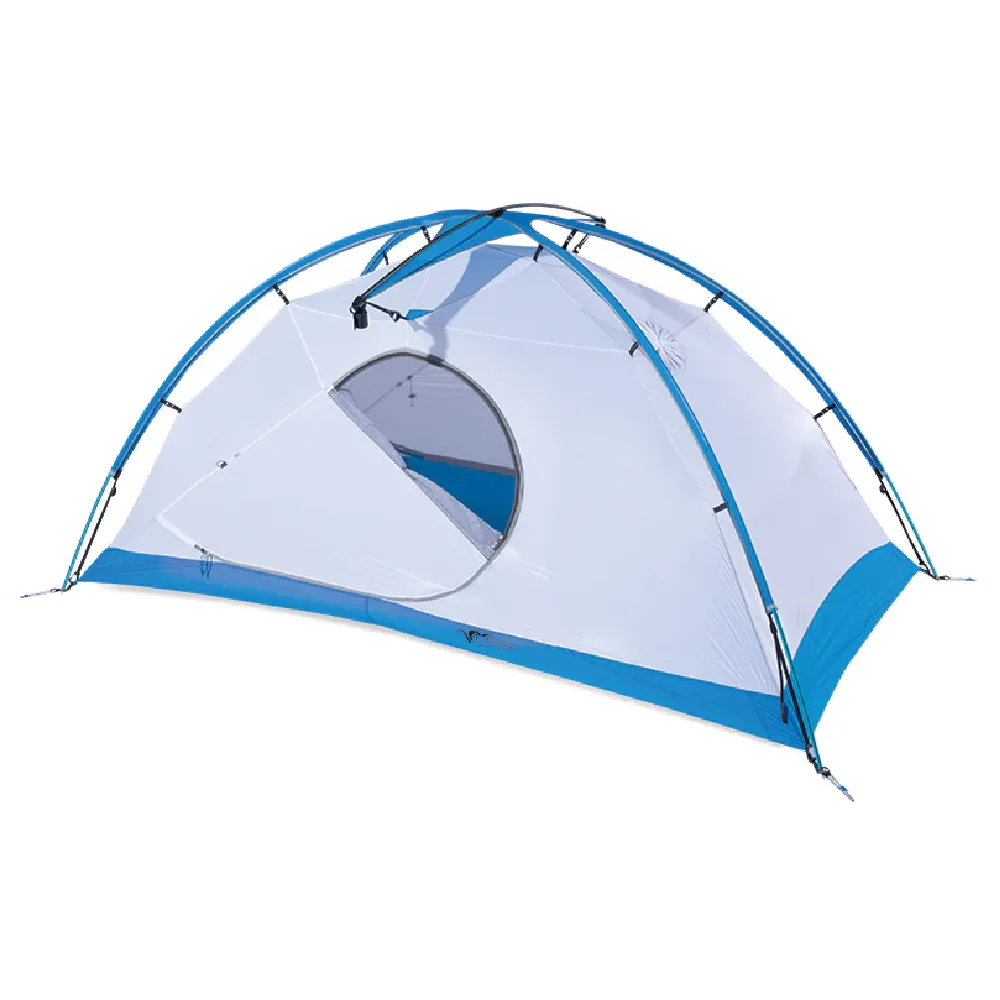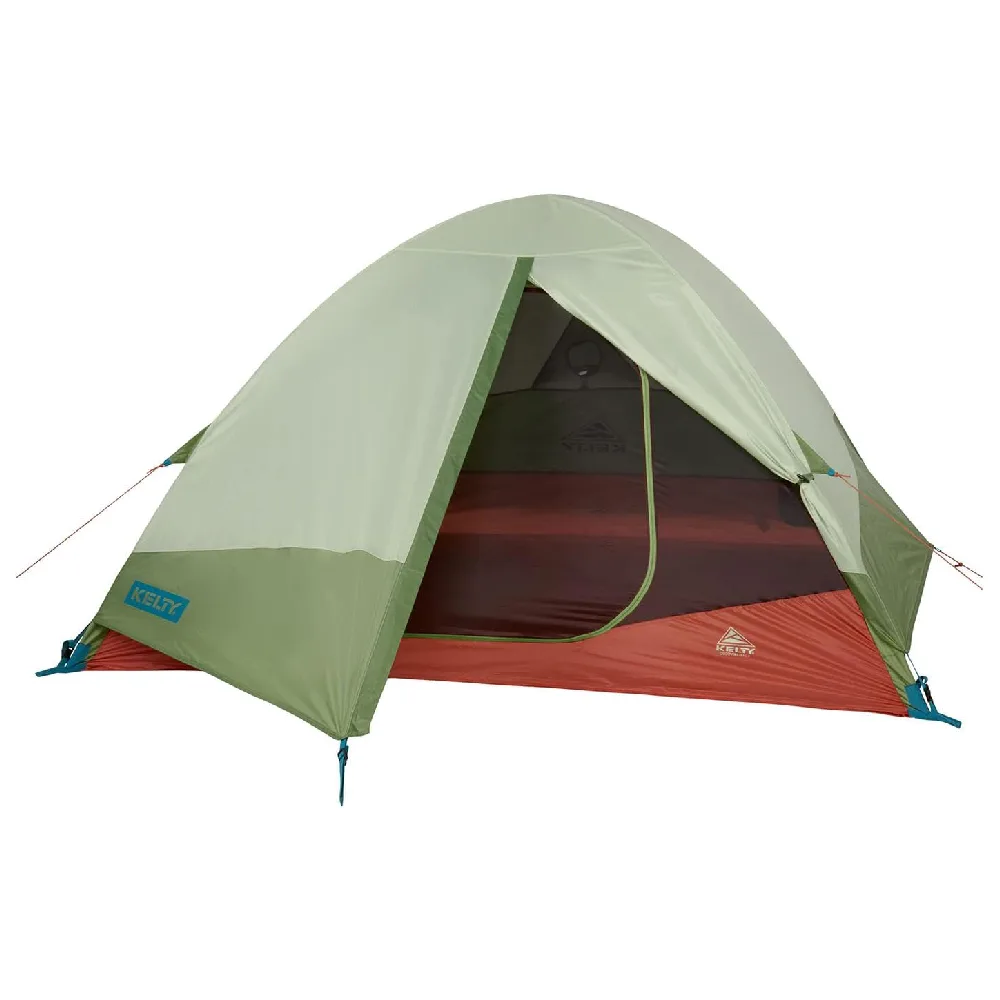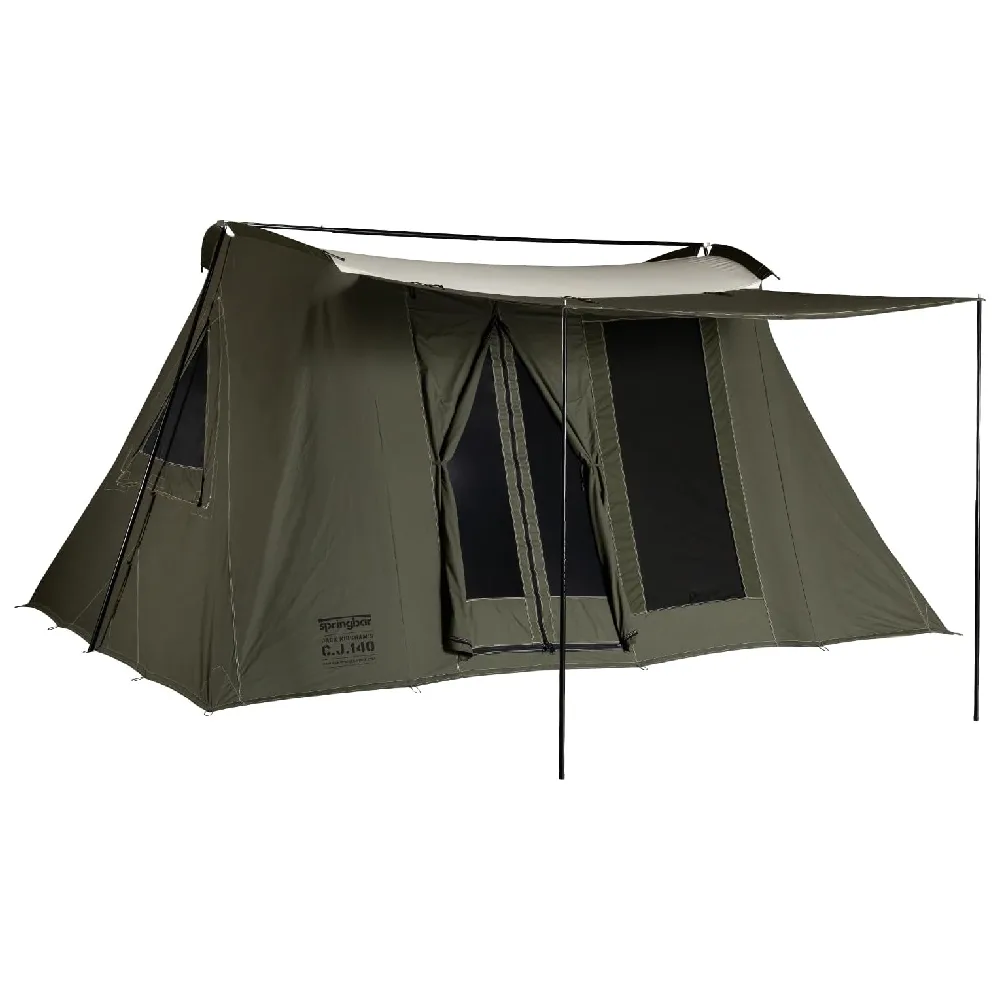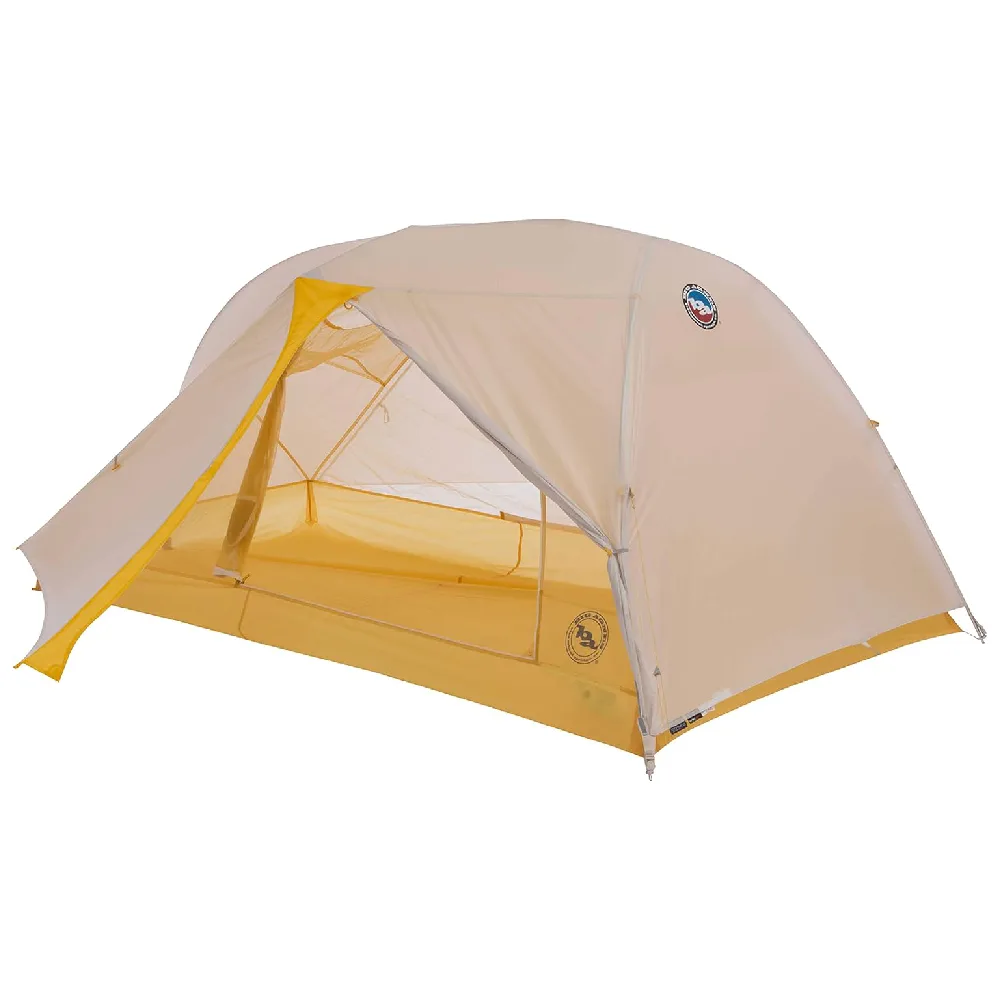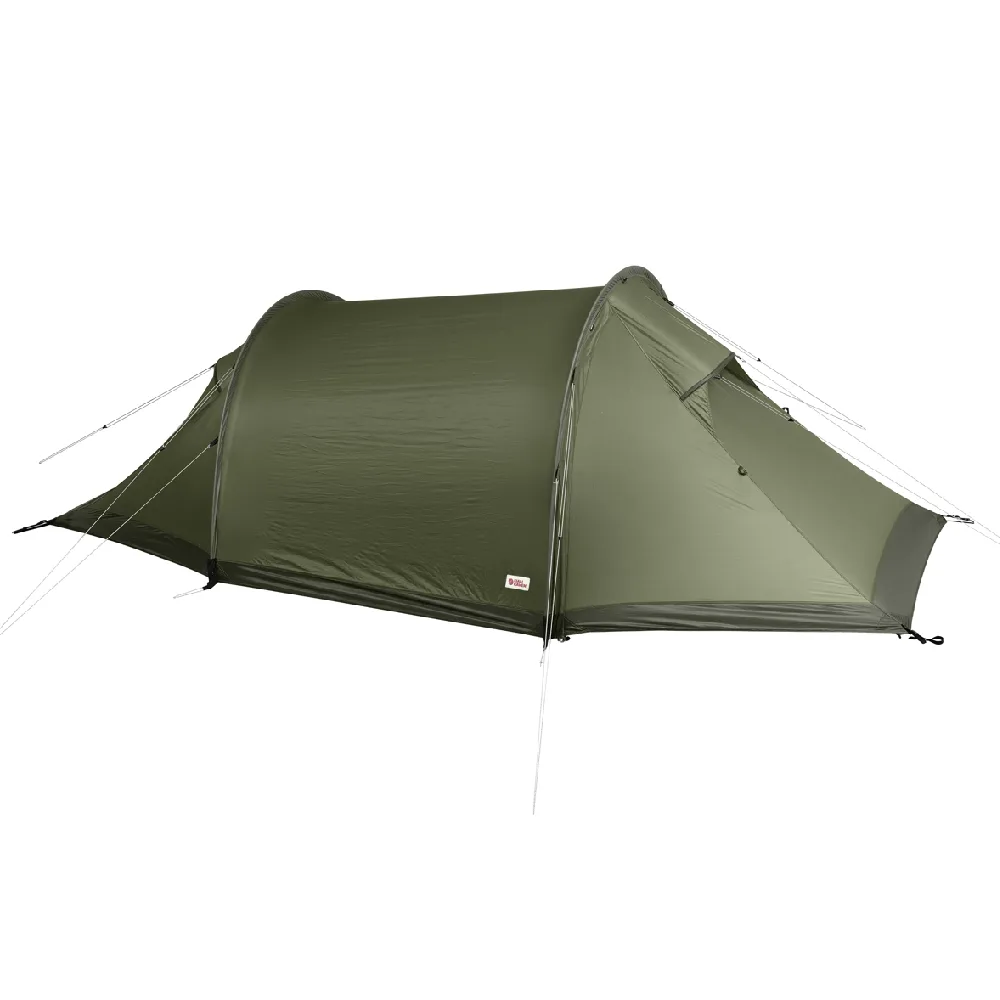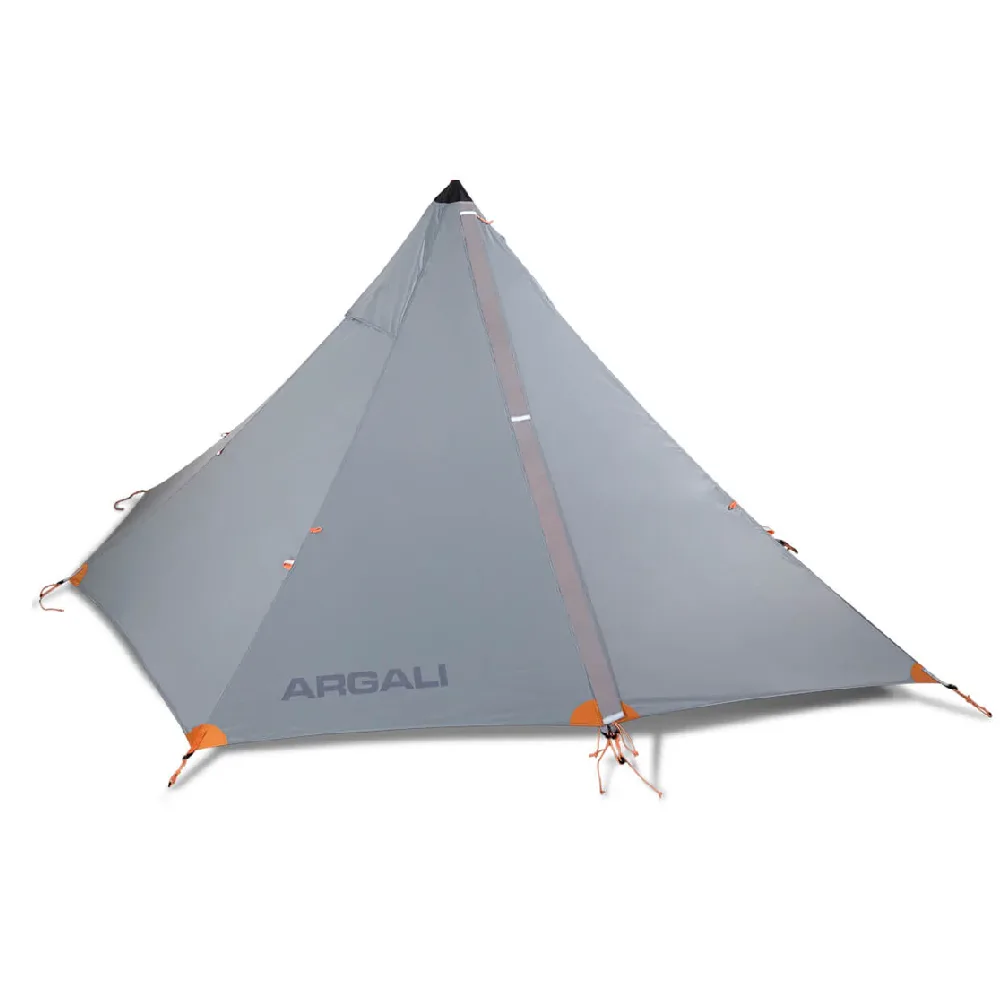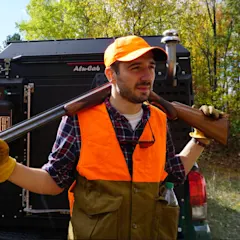We may earn revenue from the products available on this page and participate in affiliate programs. Learn more ›
The kinds of hunting trips that require a tent are always the best ones. You’re usually far enough into the woods that you have little competition. Or you’re at a campground with a few buddies, chasing game far from home. Whether it’s a two-person backpacking tent or canvas wall tent with a wood stove, there’s something about camping to hunt that makes it feel all the more real. That is if you have a good tent.
Bad tents make everything above way less fun. They’re hard to put up, leak like a screen door, or weigh you down on the trail. I’ve camped in just about every kind of tent. The longest time I’ve spent in one was 60 days. And after testing some of the best tents from the best brands, I can say that what you’ll find below is all quality.
I tested each over several weeks, picking them apart so you don’t have to. If you’re gearing up for the backcountry or just want something you can throw in the back of your pickup for a quick weekend trip, you’ll find what you’re looking for here.
Best Overall: Stone Glacier Skyscraper
Best Budget: Kelty Discovery Trail
Best Wall Tent: Springbar Classic Jack 140
Best 2-Person: KUIU Mountain Star
Best Backcountry: Big Agnes Tiger Wall
Best 4-Season: Slingfin OneUp
More Tents We Tested
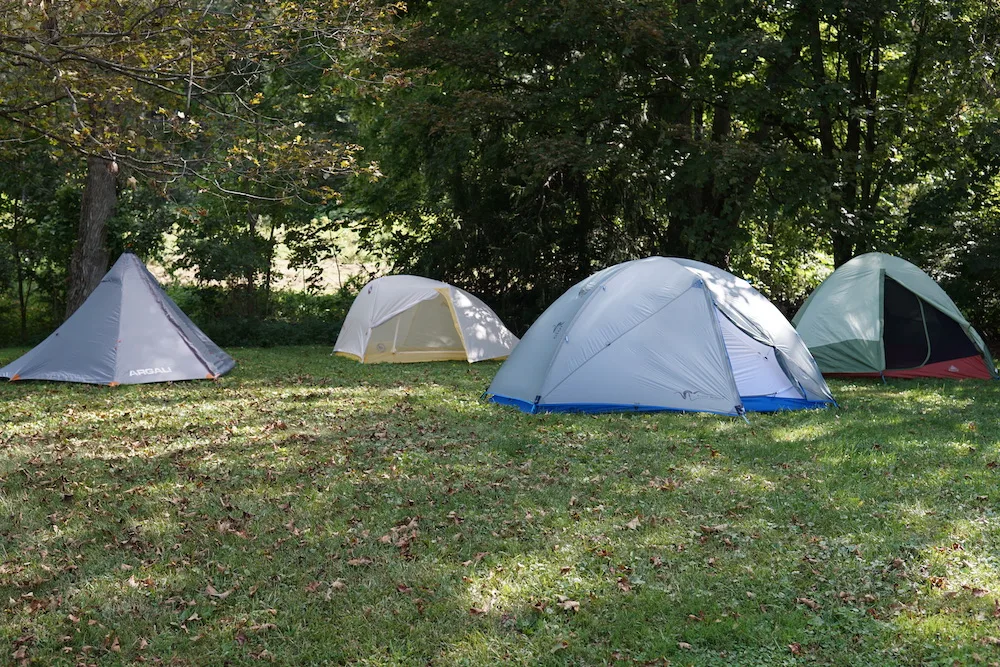
Best Overall: Stone Glacier Skyscraper
Specs
Weight: 5 lbs 1 oz
Capacity: 2 person
Seasons: 4
Time to set up: 12 minutes, 47 seconds
Time to take down: 4 minutes, 33 seconds
Pros
Extremely versatile
Rugged construction
Multiple pockets inside for gear
Cons
Price (but you get what you pay for)
A bit heavier than other tents
If I could have only one tent for hunting everything, in every season, it would be the Skyscraper 2p. This tent is a bit heavier than the KUIU and Big Agnes below, but it’s really a different kind of tent. Plus, it still only weighs 5 pounds. You can break it up into four different configurations, allowing you to leave parts at home when weight is an issue and weather is not. And when weather is an issue, this Stone Glacier shelter really excels.
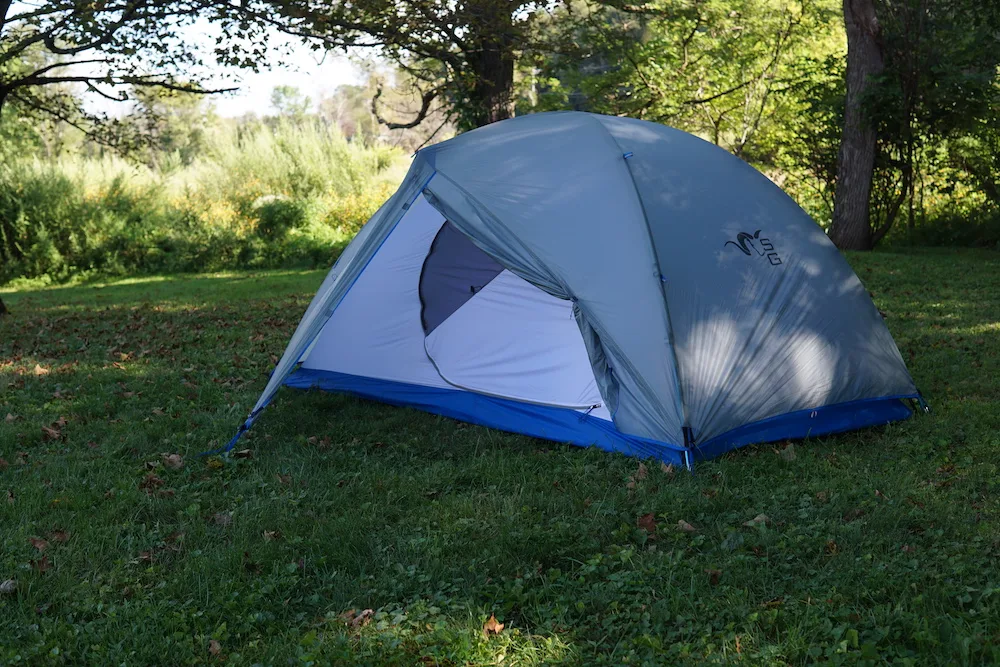
The Skyscraper was made with Slingfin, a company that produces tents for extreme mountaineering expeditions. It really shows in the construction of this tent. With eight guyline points and its WebTruss inner design, it’s virtually bomb-proof. The inner tent may not have as much ventilation as some others here, but it’s great for heat retention. Best of all, if you don’t want to use it, you can get rid of it and just take the rainfly and poles.
For anyone who has been hunting from a tarp, I’d highly recommend upgrading to the Skyscraper. Its modularity lets you set it up with trekking poles and the tent poles, giving you a domed shelter that is much better than just a tarp. With 10.65mm DAC poles, WebTruss architecture, and nylon ripstop fabric, the Skyscraper is built for tough mountain hunting and heavy snow loads. It’s versatile enough to take on the most mild early-season hunts, and rugged enough for high alpine environments. If you’re looking for one tent for your solo hunting adventures, this is it.
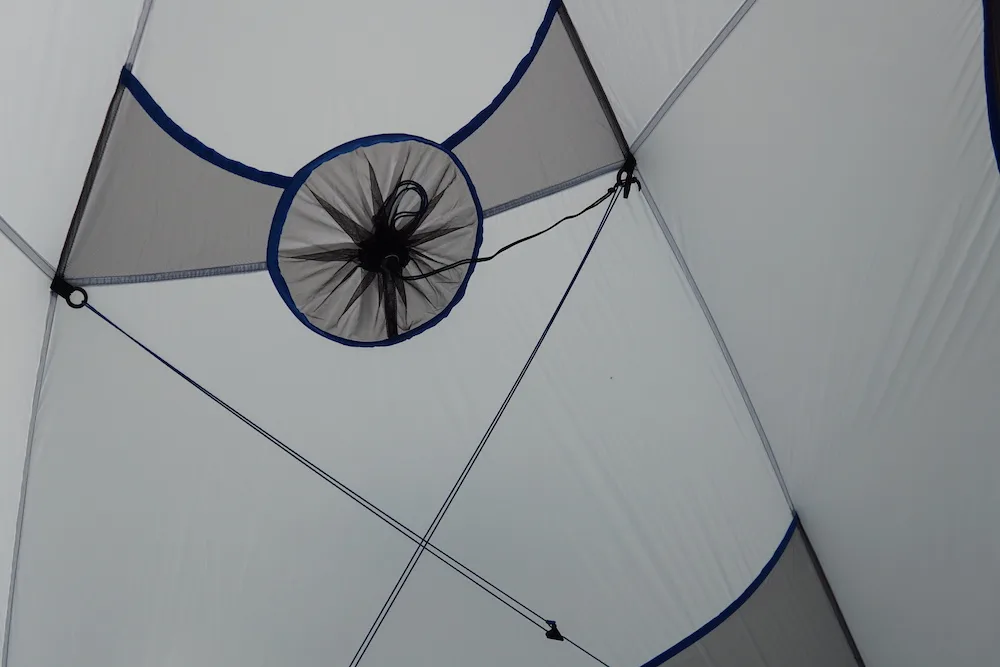
Note: Setting up this tent was a little trickier than others on this list. There are a lot of parts that come with the tent that need to be installed. Stone Glacier has been very good about giving resources on their website to assemble this tent in different configurations, with a lot of great video examples. I’d suggest watching them before taking the tent into the field.
Best Budget: Kelty Discovery Trail
Specs
Weight: 5 lbs 15 oz
Capacity: 3 person
Seasons: 3
Time to set up: 9 minutes
Time to take down: 3 minutes, 22 seconds
Pros
Affordable
Made from durable materials
Roomy
Cons
Only one vestibule and entrance
Cheap tent pegs
I have been a fan of Kelty tents for a long time, ever since I got one for Christmas more than 10 years ago. In a time of hunting-specific brands with more and more technical gear, you might look over Kelty as just a backpacking company. But their gear can put up with the rigors of just about any hunt. Best of all, they’ve always made equipment most people can afford.
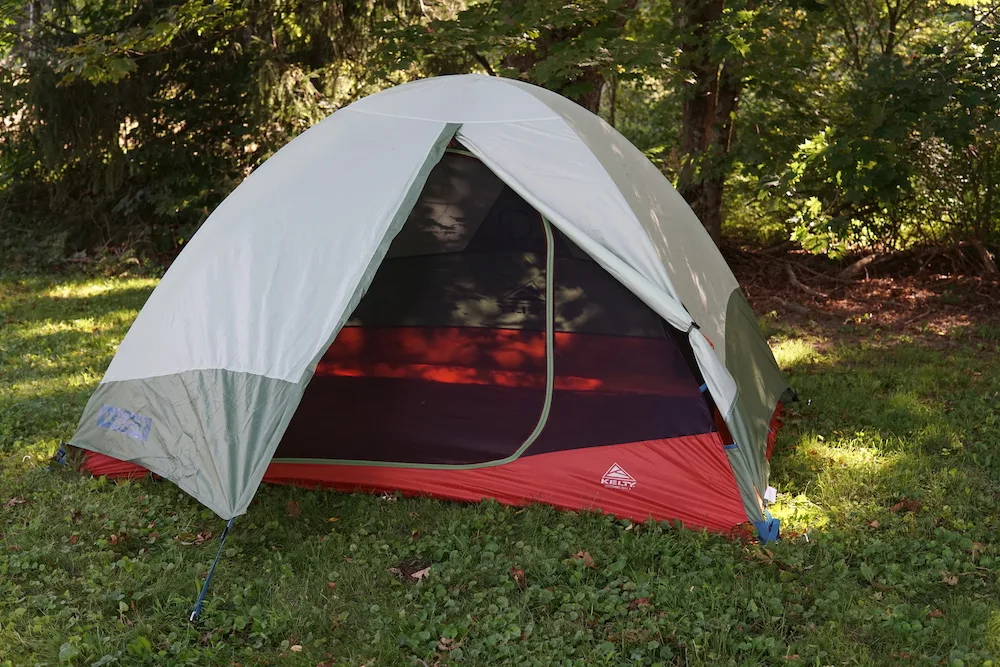
At $150, the Discovery Trail 3 is a durable, well-constructed backpacking tent that will likely serve you for a long time. Setup is a complete breeze with color-coded tabs, big snapping buckles, and no small parts to get lost. It terms of high-tech poles, ultra-light materials, and premium tent stakes, this tent doesn’t have it. But that’s OK. It makes up for it in simplicity and cost.
I spent one of my most comfortable nights during this test in the Discovery Trail 3. Compared to the high-tech, two-person tents here, the tent’s three-person capacity is really great for a solo hunter or two hunters in a pinch. It has a vestibule in front for gear, but you really don’t need to use it because there’s so much room in the tent. The flaps can also be opened and pinned on both sides, giving you a big lean-to—weather permitting.
I’d feel comfortable in the Discovery Trail 3 well into the fall. And while it isn’t the lightest tent here, it strikes a nice balance between weight and durability. For hunters on a budget, it’s hard to beat.
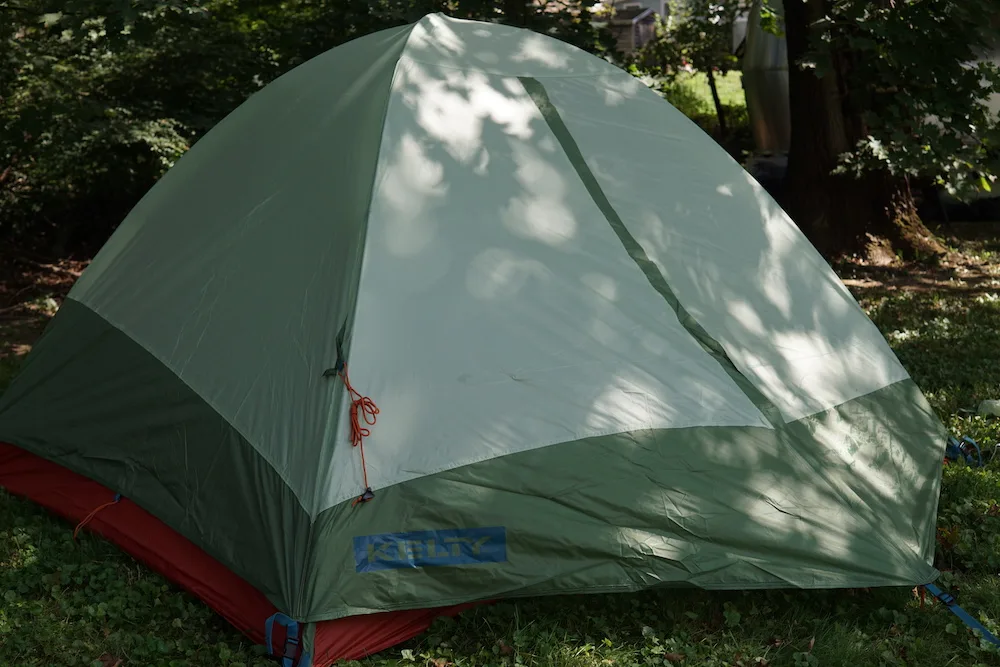
Best Wall Tent: Springbar Classic Jack 140
Specs
Weight: 80 lbs
Capacity: 8 person
Seasons: 4
Time to set up: 18 minutes, 22 seconds
Time to take down: 10 minutes, 45 seconds
Pros
Easy setup
Affordable for a wall tent
Wood stove compatible
Cons
May need to buy some extras
Heavy
Springbar’s imported Classic Jack 140 is a lot of canvas tent for the money, and I like how the company is upfront about it not being made in the USA like their flagship Skyliner tents. Being made overseas knocks around $1,000 off the price, giving you a tent that could comfortably hold three hunters and their gear for just $1,200 with a stove jack, and $1,099 without. Technically, it’s not a wall tent, but it sure as hell feels like one. Even better is that it's way easier to set up than more traditional wall tents. I could put it up in under 20 minutes on my first go, and I could get that down to 15 now that I know what I’m doing.
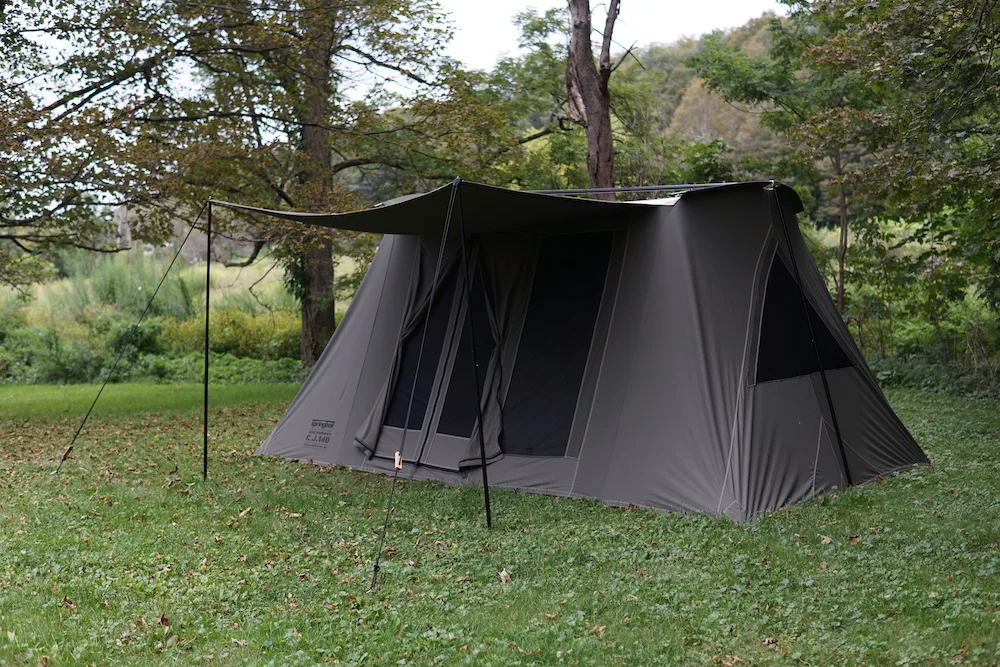
The Classic Jack feels like it belongs on an adventure. Its cool retro-style retractable awning makes me want to take it someplace exotic. Inside, you’ll find a sturdy vinyl floor and massive zippered windows and doors for cross ventilation. Fully opened up, it feels like you're sleeping on a screened-in porch. During my test in full-on summer heat, I really liked that. I also liked the ceiling height. Without a pitched roof design, all 6 feet and 3 inches of me could walk around with no problem.
Out of the box, the Classic Jack is ready to hunt in most climates—especially out west in areas with less rain. If you’re planning to pick one of these tents as your go-to wall tent every season, I’d opt for a few accessories right away. I’d buy the stove jack and Winnerwell woodstove kit, which replaces one of your windows with a zip-in stove jack and gives you all the goodies to run a stove. I’d also pick up a Stormfly for camping in areas with sustained rain. After that, you’d be ready for just about anything.
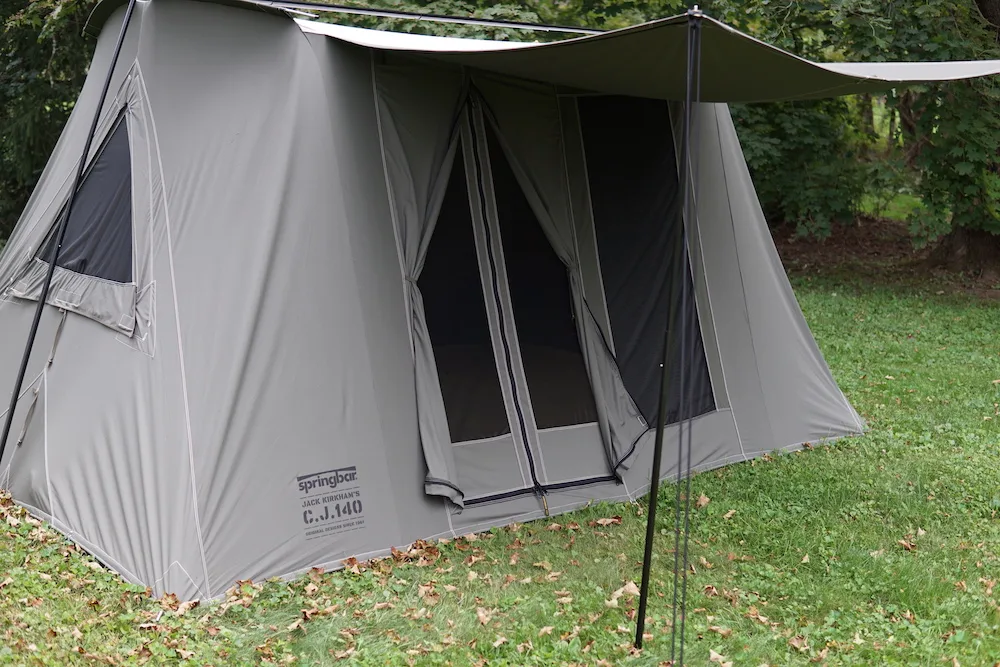
Best 2-Person: KUIU Mountain Star
Specs
Weight: 3 lbs 8.5 oz
Capacity: 2 person
Seasons: 3+
Time to set up: 15 minutes, 57 seconds
Time to take down: 6 minutes, 12 seconds
Pros
Lightweight
Sized well for hunting
Good ventilation
Cons
Might not get you to late-season
Carbon poles need to be cared for (aluminum poles also available)
The KUIU Mountain Star was one of the lightest tents in my test, thanks to carbon-fiber trekking poles from Easton. The poles feel like they’re made out of arrow shafts, and they seem strong enough for the job. That said, if I planned on using this tent long-term, I’d take extra care with assembly and takedown.
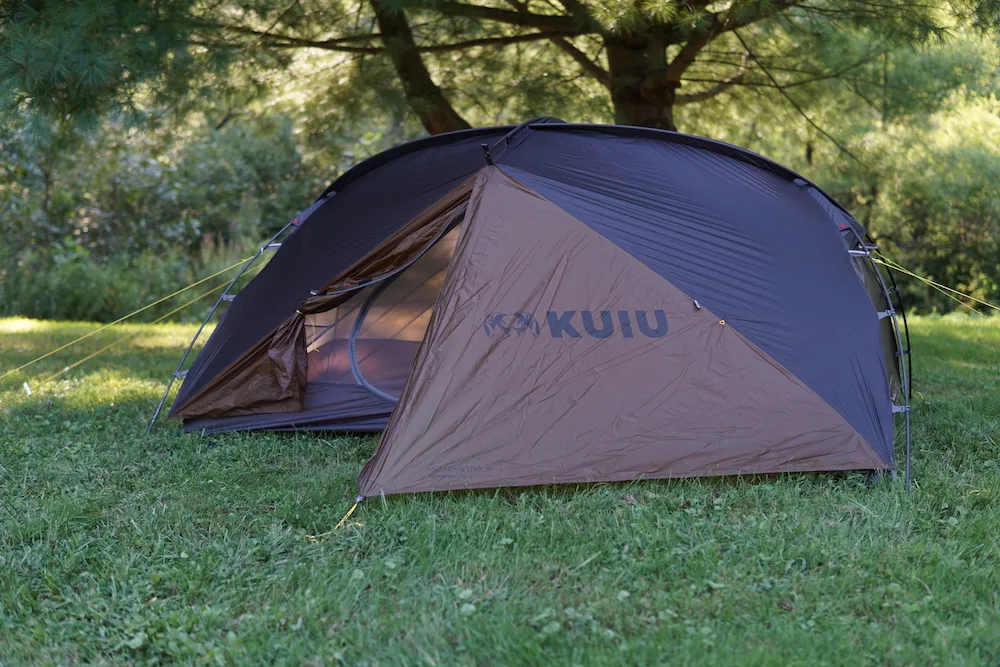
My first run setting up the tent was a little confusing, but that’s because I’m terrible with instructions and didn't pay attention to things like color coding. Once I unscrambled my brain, it was pretty easy to figure out and simple to set up well. KUIU recommends always setting the guylines on this hunting tent, and that added an extra minute. Once assembled, it was sturdy with a low profile I felt would withstand heavy wind.
You get two vestibules and two doors with the Mountain Star. This is great for gear and extras. The inside of the tent is pretty much all screened, and it gets fantastic ventilation. I also appreciated a lantern hanger that comes pre-installed.
You can go even lighter with the Mountain star—down to just over 3 pounds—if you ditch the inner bathtub-style tent and opt to sleep on the ground. Opening both vestibules is also nice for long glassing sessions out of the weather. As light as it is, the fabric feels like it can take a beating, with taped seams and 15D Silicone/PU waterproof coating.
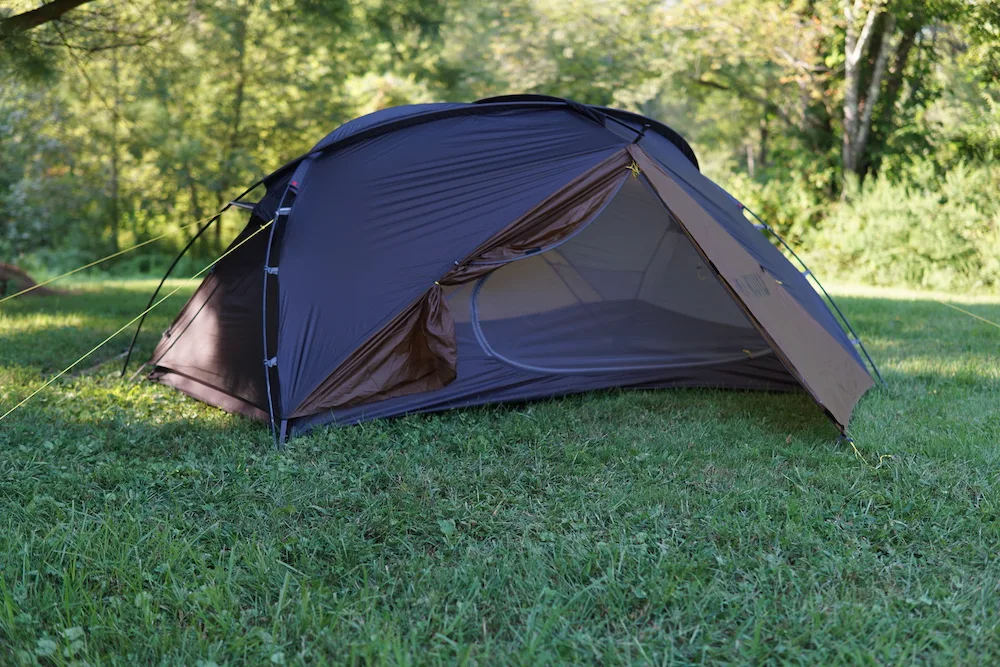
Best Backcountry: Big Agnes Tiger Wall
Specs
Weight: 2 lbs 8 oz
Capacity: 2 person
Seasons: 3
Time to set up: 10 minutes, 12 seconds
Time to take down: 3 minutes, 7 seconds
Pros
Extremely lightweight
Environmentally friendly materials
Easy setup
Cons
Not a good for late season, but not the tent’s fault
When I took this tent out of the box, I was shocked at how light it was. Upon setting it up, I was really impressed with the simplicity of its design. The tent uses a single DAC Featherlite aluminum pole for the entire structure, making it virtually impossible to screw up. The pole ends snap into place easily with keyed holes on the tent body, and the rainfly buckles down with well-made plastic buckles. The Tiger Wall is also one of the most environmentally friendly tents on the market because it uses Solution Dye fabric.

As light as this tent is, I would place it firmly in the early season category when compared to other tents here. This is not a knock on the tent because it doesn’t seem like it was designed for hunting deep into the late season. It’s geared more toward backpackers. For the September elk hunter, backcountry turkey hunter, or any hunter chasing critters in the desert, this tent rocks.
I found the Tiger Wall tent to be comfortable and easy to ventilate on the humid summer night I spent in it. It's so light that I would rather bring this than something like a tarp and trekking pole setup. I also appreciated the large pocket in the ceiling of the tent for bulky stuff like a down jacket or sweatshirt. The vestibules are big enough for gear, and both can be opened for cross-ventilation. It’s easy to see why backpackers like this tent, and if you’re looking to lighten your pack, you should give it a try.
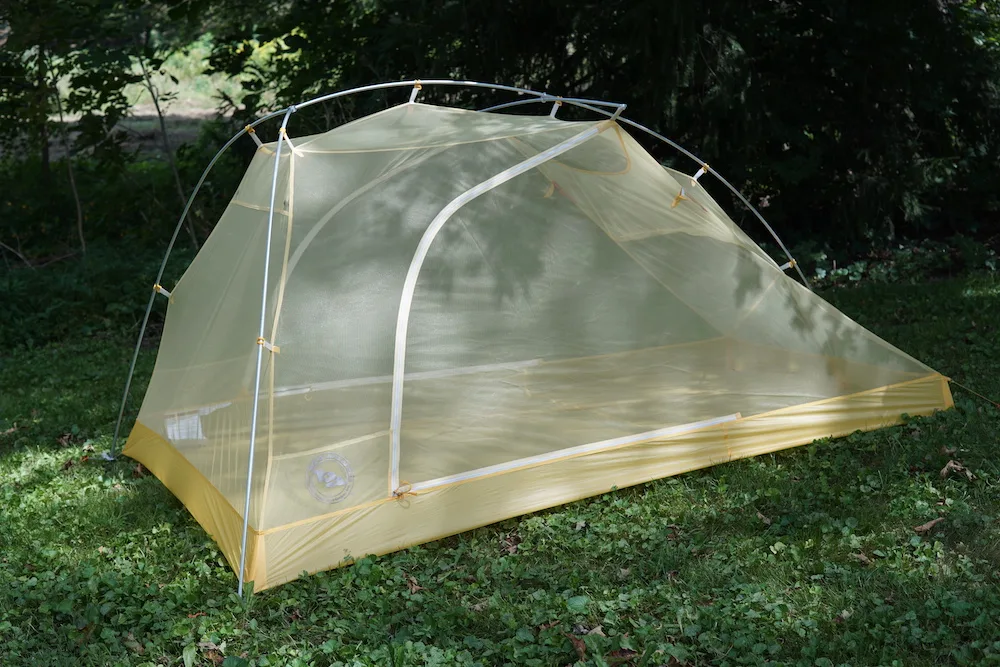
Best 4-Season: Slingfin OneUp
Specs
Weight: 21 lbs 3 oz
Capacity: 4-5 plus gear
Seasons: 4
Time to set up: 18 minutes, 22 seconds
Time to take down: 8 minutes, 30 seconds
Pros
Designed for extreme winter weather
Comfortably holds hunters and gear
Modular for different setups
Cons
Expensive
No option for wood stove
The OneUp may not be on a lot of hunters’ radars because it’s really geared toward mountaineering and harsh alpine environments. But if you’re going to hunt in a place like that, it’s worth looking into. The tent's WebTruss system might remind you of the same system used on the Stone Glacier Skyscraper because both were designed and patented by Slingfin. With the poles inserted, it creates a very strong and versatile structure for a few different tent configurations.
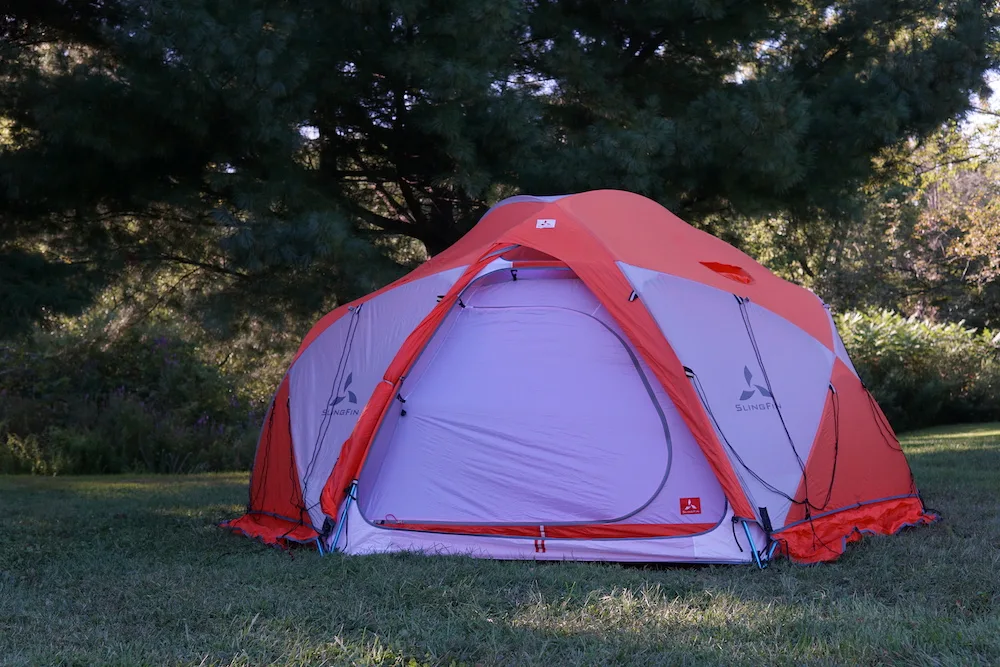
The OneUp really shines in high winds under a heavy snow load. My testing conditions were pretty far from that, but I could get a feel for how strong this tent is. It’s also very light for the amount of space and strength you get. Plus, assembly is pretty easy, even in windy conditions.
With the OneUp, you can virtually seal the tent off from snow spin drifting under the walls. The tent also has three large vent windows that are perfect for hanging a solar panel or just keeping condensation to a minimum. The tent can be configured with just the fly for a canopy-style shelter or set up in a double-walled configuration for more strength and insulation from the elements.
If I were going to camp on Mars, I’d bring a OneUp. It's the right size for two people as a basecamp, and it could be used for four if you’re on the move. This tent isn’t cheap at over $3,000, but the kind of hunting it would be best for isn’t cheap, either. It would work well for a group of hunters after mountain goats, bighorn sheep, or high-country mule deer. And if you’re the kind of hunter who mixes in a little mountaineering or backcountry skiing during the offseason, it’s a good fit for you, too.
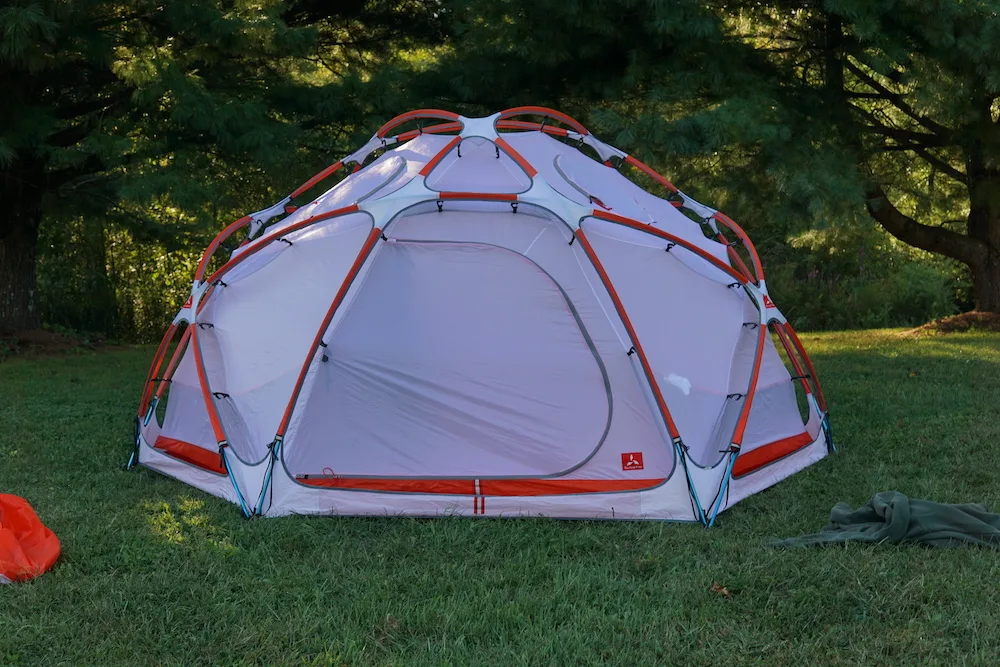
More Tents We Tested
Fjallraven Abisko Lite
Specs
Weight: 4.5 lbs
Capacity: 2 person
Seasons: 4
Time to set up: 14 minutes, 57 seconds
Time to take down: 3 minutes, 52 seconds
Pros
Cheaper than the competition
Good quality tent bag
Easy setup
Cons
Only one way in and out
The Fjallraven Abisko Lite 2 was the only tent in my test with a royal appointment from the King of Sweden. I don’t know how much mountain hunting the king does, but he has good taste in tents. What I like best about the tent is that it comes in cheaper than other premium tunnel tents on the market. At $700, it isn’t cheap by any stretch, but if you’re dead-set on this design, it isn’t a bad way to go.
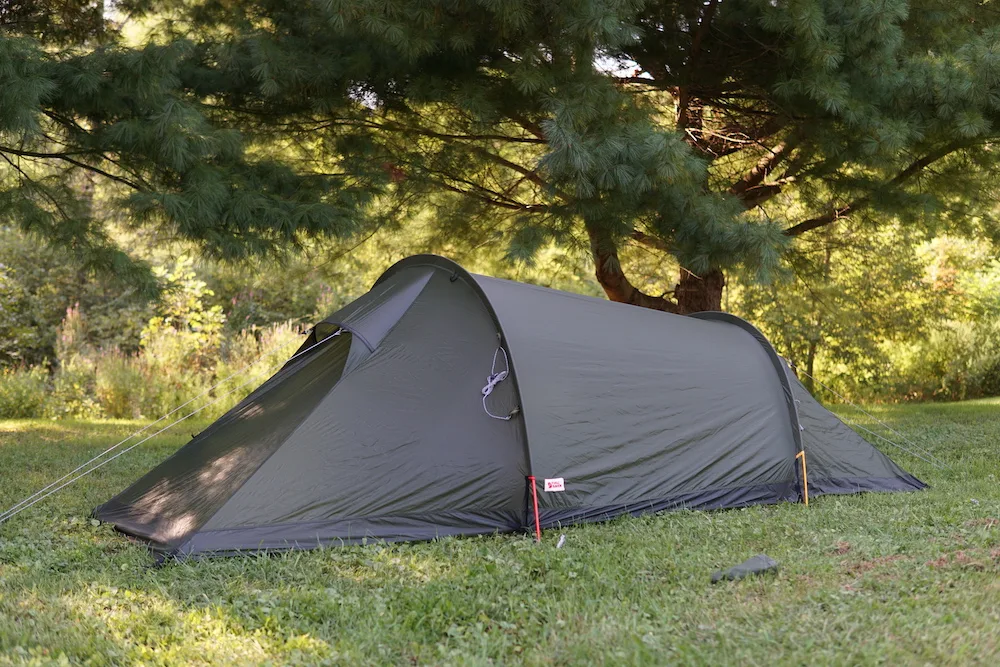
Setup and take down were both very easy. There are just two poles that form the arched half-barrel shape. Once they’re in place, you just stake out the guylines, and the tent is up. Inside, I felt like I got a lot of protection, and there was enough room to sit upright toward the front door. Taking the the tent down was simple, and the bag is nice and roomy (probably the nicest tent bag in the test).
Fjallraven has made the tent with a double-zippered door, so you can completely block off the screen under high winds. It also has a roomy vestibule for gear, and you can open both ends for cross-ventilation. I slept well in the Abisko Lite 2, though I wouldn’t recommend it for two people unless you really know each other well. I’d say this is a good tent for backpackpacking but better for strapping to a horse, electric bike, or ATV. It is a little heavy compared to other tents on the market. If you’re looking for a quality tunnel tent, and you like this design, though, it’s a great deal.
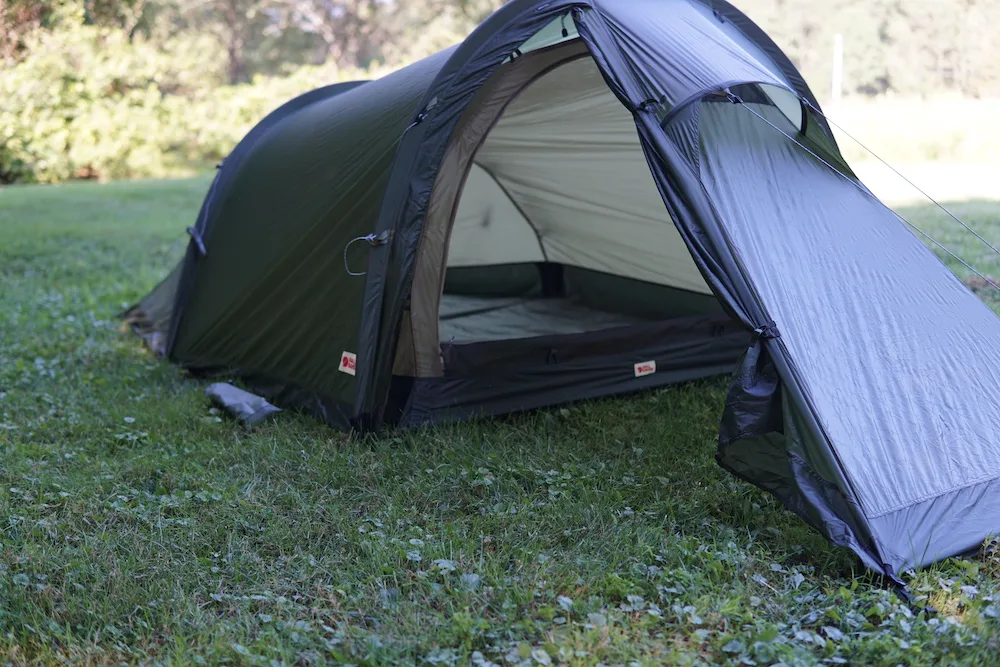
Argali Rincon
Specs
Weight: 1.2 lbs
Capacity: 2 person
Seasons: 4
Time to set up: 10 minutes, 25 seconds
Time to take down: 2 minutes, 48 seconds
Pros
Packable
Extremely light
Wood stove compatible
Cons
Tight inside
Condensation build-up
As it was configured, the Argali Rincon tent I tested would be ideal for a solo hunter under a lot of different conditions. My test tent came with a half insert (bathtub-style floor and screened walls) that will keep bugs away while you sleep. By using it, you can keep the other half of the tent open for gear or even a wood stove. The Rincon was the only tent in the test that came with a pre-installed stove jack from the factory. Argali also sealed every seam, which is a $40 add-on on their website. All in, a setup like this would cost around $480, and it could take you from early September elk to late-season mule deer.
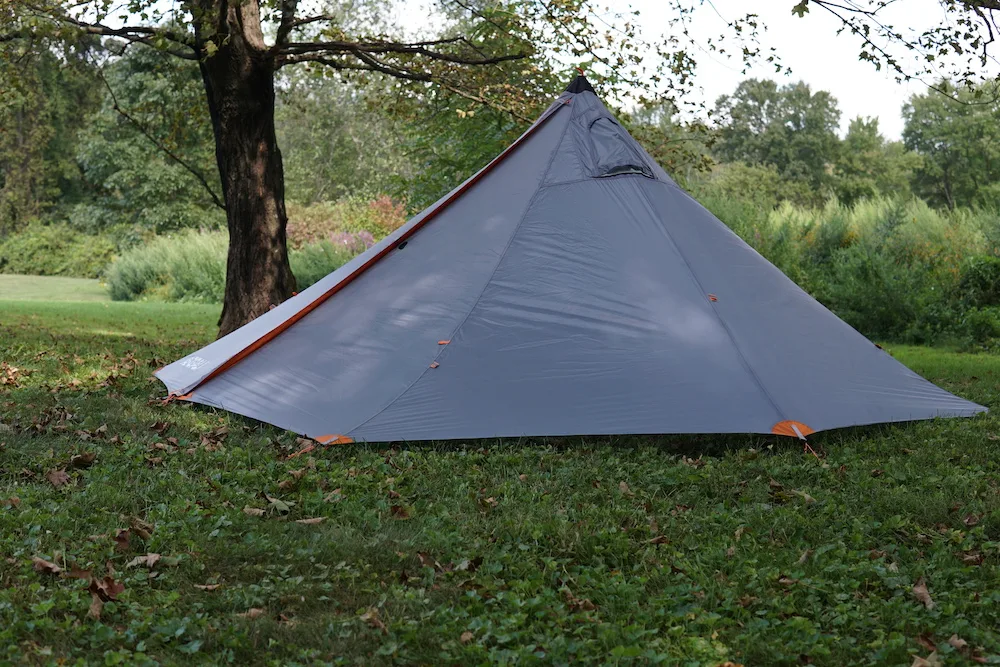
The Rincon was different from a lot of the tents I tested because it doesn’t come with any poles. Packed away, it’s about the size of two Nalgene bottles and weighs just over a pound. To assemble, you stake out the corners, clip in the insert, and raise the tent with a single trekking pole. The process is very simple once you get the hang of it, and the tent walls can be cinched tight to the ground to keep the wind out. What’s also cool is the ability to use one of Argali’s titanium wood stoves in the tent, even though it’s really only made for one person. If you’ve always wanted to try camping in a hot tent, this might be a good way to try it out.
Spending a night in the Rincon was comfortable but a little tight. The walls are sloped low, and if you sleep in the insert, you’re right up against them. That said, it was still very manageable, and I could imagine it being pretty cozy with a wood fire going. One downside I noticed was a lot of condensation on the inside of the tent compared to other designs here, though you might be able to find a better way to vent out moisture using the door.
This tent is good for 5- to 10-day hunting trips deep into the backcountry or short stays in spike camps away from a main wall tent basecamp. If I were going to stay any longer than that, or be in a situation where I knew I would experience sustained rain for days, I’d probably opt for a bigger model like the company’s Absaroka, Yukon, or Selway.

How We Tested Hunting Tents
Setup and takedown are two big parts of camping with a tent. I wanted to find hunting tents that were simple and easy to assemble with minimal instruction. To test this, I timed the first time I set each tent up to see how intuitive the design is. I also timed taking the tent down and discounted points for tents that wouldn’t go back in the bag—because we all know how frustrating that can be. I also gave extra points to tent designs with fewer parts to lose and those that come with extras just in case you do lose them.
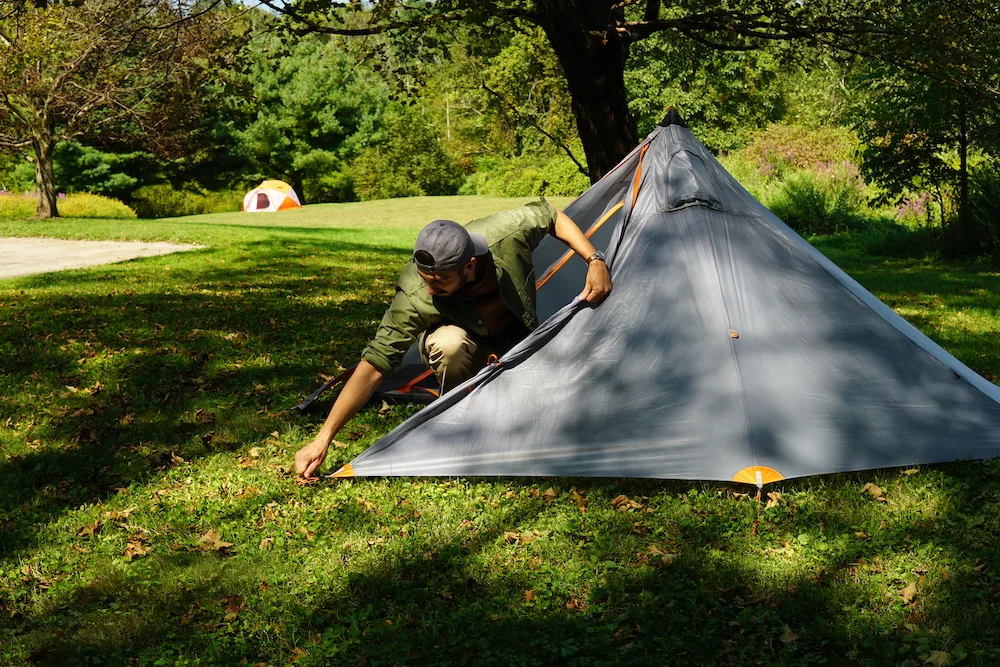
I would have loved to take each of these tents on a rugged hunting trip, but my time and bank account would not allow it. I was able to spend at least one night in each of the tents, and while doing so, I got an impression of how they hold up, how much condensation you’ll experience with them, and how well-ventilated they are.
There is a diversity of tents above, and it would be unfair to do an apples-to-apples comparison. For the hunting tents that fit a similar category, like wall tents or backpacking tents, I gave points for the features I think are important. For example, lighter backpacking tents got more points, but only if they were durable. Wall tents got points for being ready to hunt with things like a stove jack or rain fly, and packability for things like horses and ATVs.
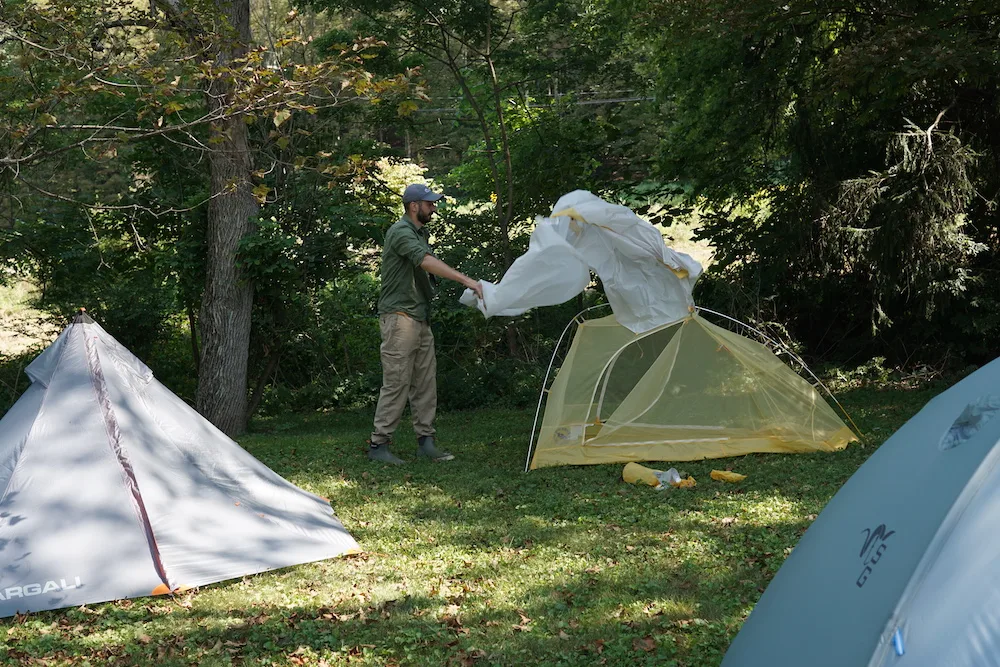
What To Look for in a Hunting Tent
Style
Are you climbing into thin air and pitching your tent on the side of a cliff, or are you pulling up to a car camping spot and prize comfort over all else? Do you need to survive winter weather, or will you limit your far-flung adventures to warmer months? These are all questions to ask yourself when looking for a hunting tent. Tents are rated for seasons, and it’s good to follow those guidelines when selecting one.
Size
Hunting tent person capacity is a little off when you look at the specs of tents on the internet. They’re listed as the tents maximum capacity, not the most comfortable capacity. When you factor in things like gear, tents get even tighter. Err on the side of bigger if you plan to camp with more than one person in your tent. And if you’re solo, go with a 2-person tent at the smallest. A good general rule of thumb is to add one person for every two that are occupying the tent, but I know a guy who hunts solo from a 7-person tent, and he’s very happy with the room.
Consider how much gear you're bringing, too. Hunters have more gear than just about any other outdoors person, and unless you have some other way to keep gear dry, you’ll need to find room in your tent. Vestibules are good for this, but they’re limited. Try adding another person or two to your tent capacity requirements to factor in things like a backpack, bow, or rifle.
Standing Room
For extended stays in a tent, especially in cold weather, standing room is a huge plus. You can spend a week in a short tent, but you won’t want to be in there much longer than that. It’s also great to have room to put on clothes and wait out a thunderstorm. You’ll lose on packability, but the more times you can bring a big tent instead of a smaller one, the better.
Material and Construction
Most tents today are built well. Gone are the days when you can’t touch the wall of your tent while it’s raining. That said, canvas tents are semi-permeable, so you might want to invest in a rain fly. You should also think about tents with floors. Out west, this doesn’t matter as much. But in the east, midwest, and south, a floorless tent is just an invitation for ticks, mosquitos, and other nasties to get at you while sleeping.
For those areas, I suggest getting a tent with a floor and no-see-um-proof netting. Depending on the season, you also want to pay attention to how your tent is constructed. Late-season hunters will need a stronger tent to withstand snow loads, and solid inner walls to retain heat.
Final Thoughts
It’s a great time to buy a hunting tent. From ultra lightweight tents made from space-age materials to big cozy wall tents, hunters have a lot to choose from. The most important thing is to try to match the way you plan to hunt with the tent you’re interested in. Be realistic about how much gear you plan to cram into it, and spend a few nights at home dialing in your setup. By the time you take it to the woods, you’ll be an expert at setup and takedown, and it’ll be one less thing in the way of the hunt of your dreams.
Why Trust Us
For more than 125 years, Field & Stream has been providing readers with honest and authentic coverage of outdoor gear. Our writers and editors eat, sleep, and breathe the outdoors, and that passion comes through in our product reviews. You can count on F&S to keep you up to date on the best new gear. And when we write about a product—whether it’s a bass lure or a backpack—we cover the good and the bad, so you know exactly what to expect before you decide to make a purchase.

